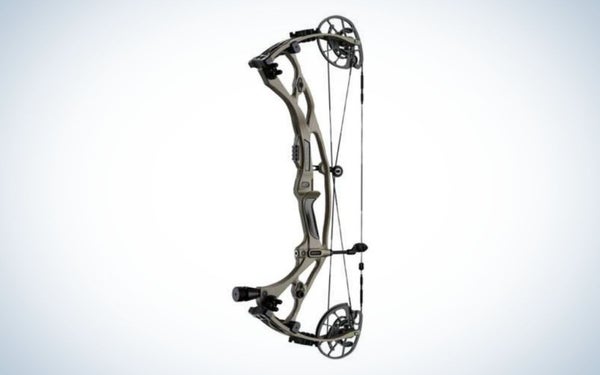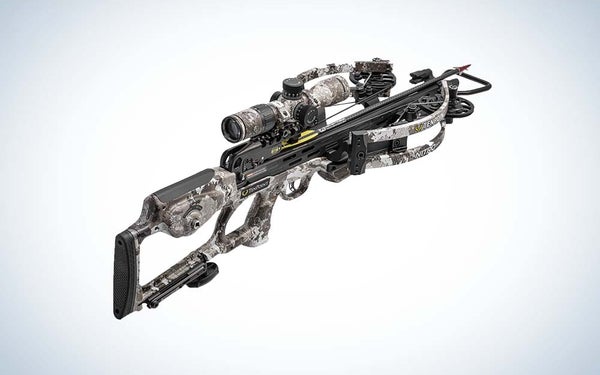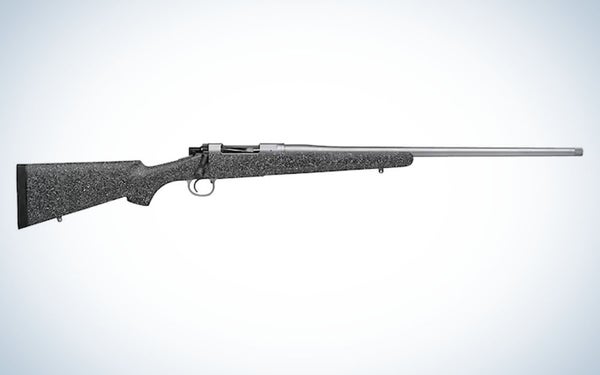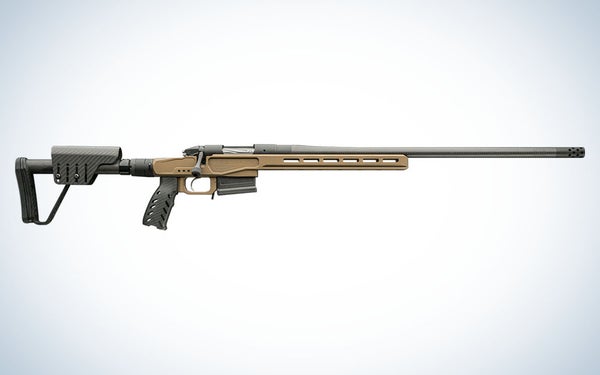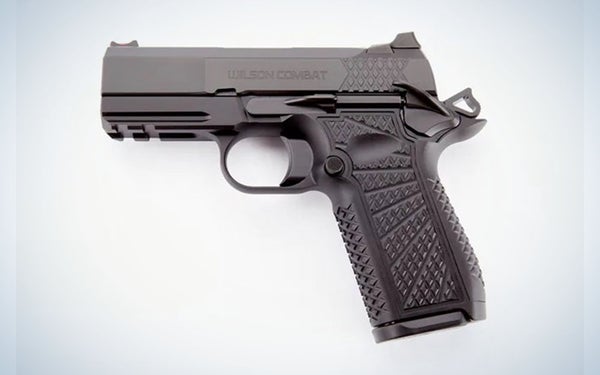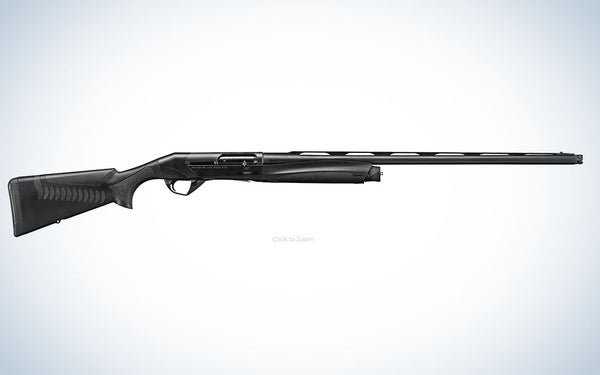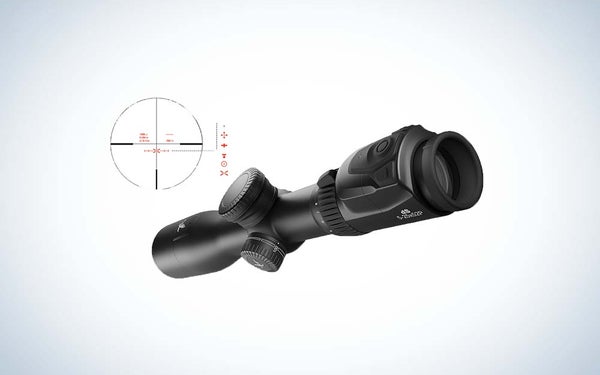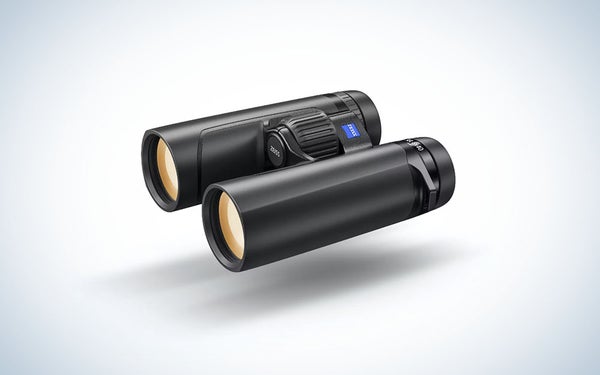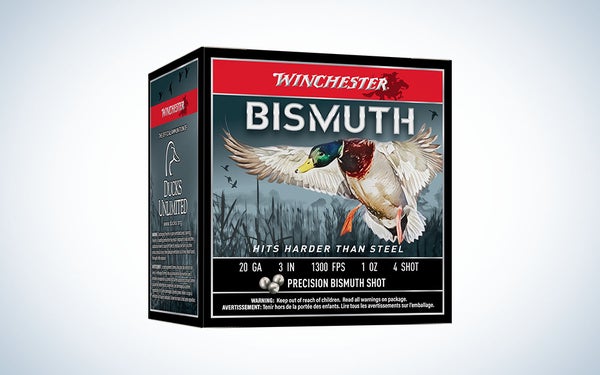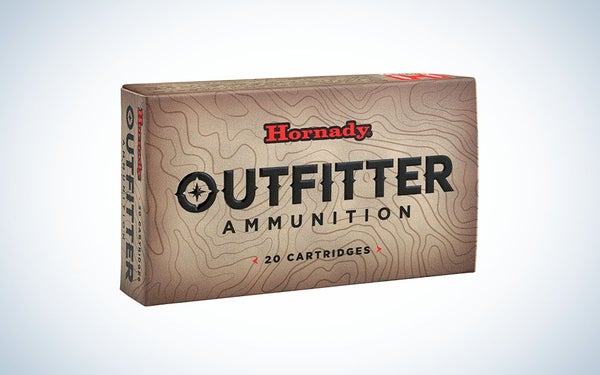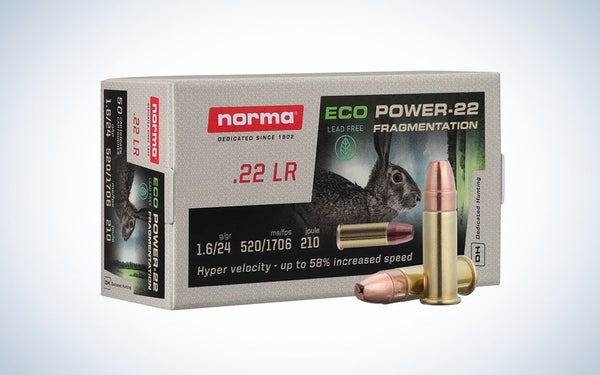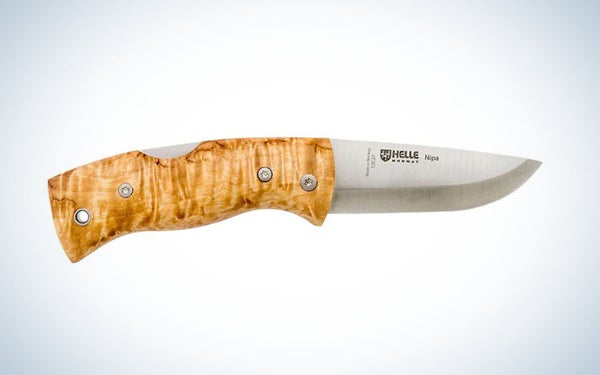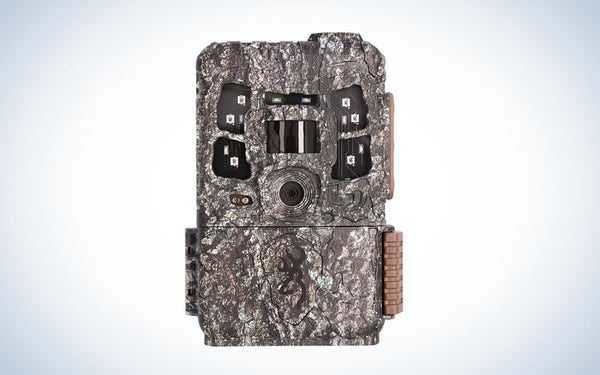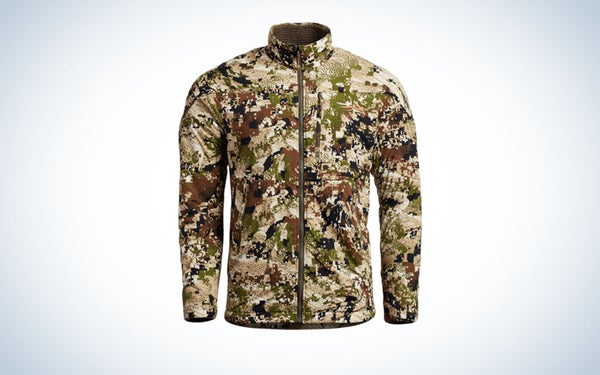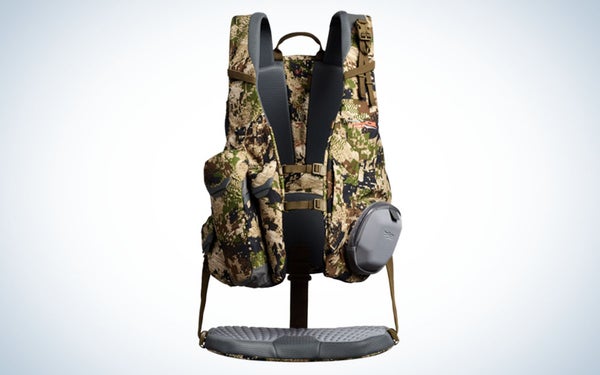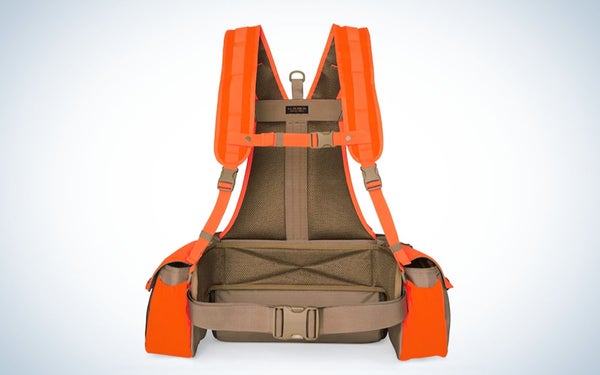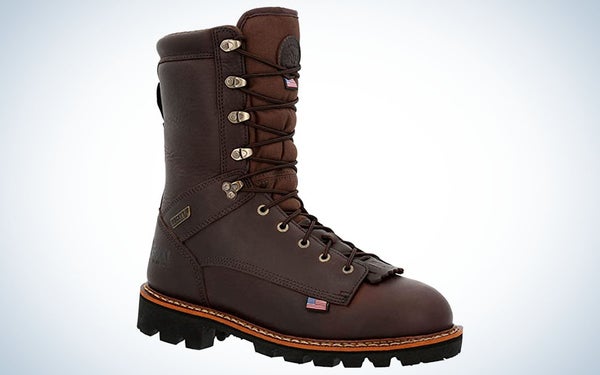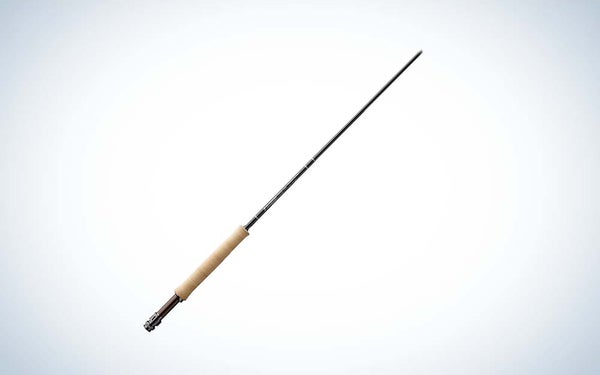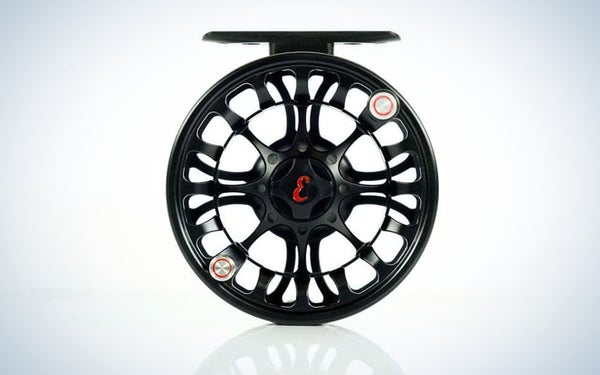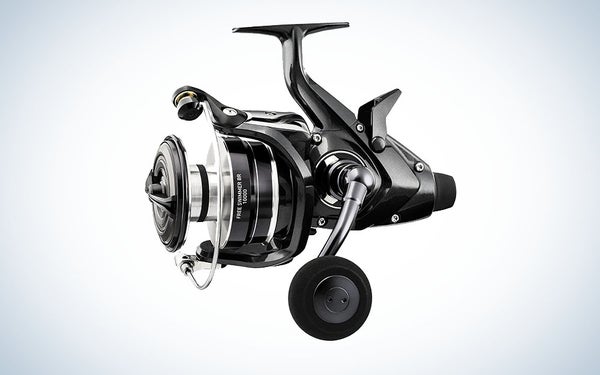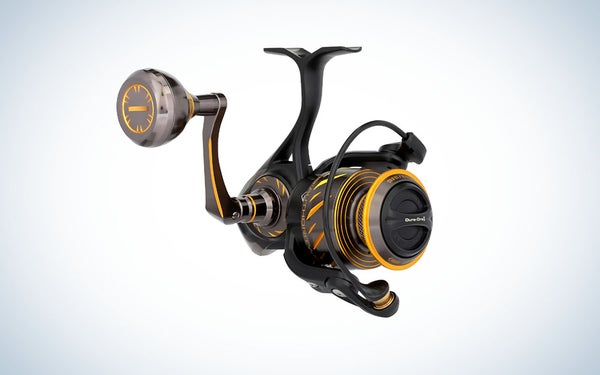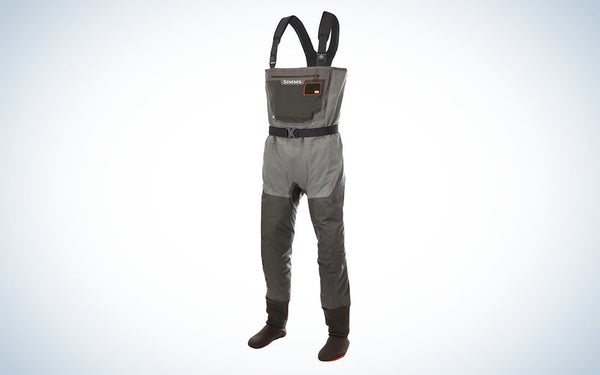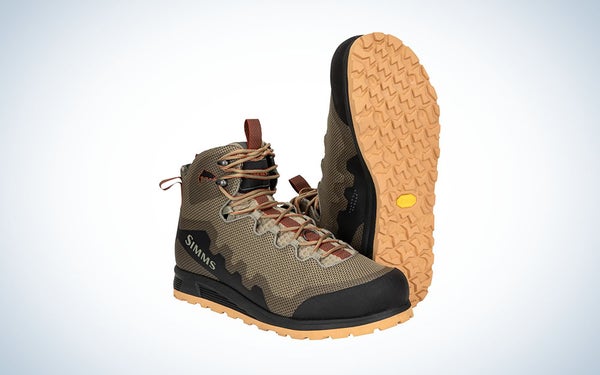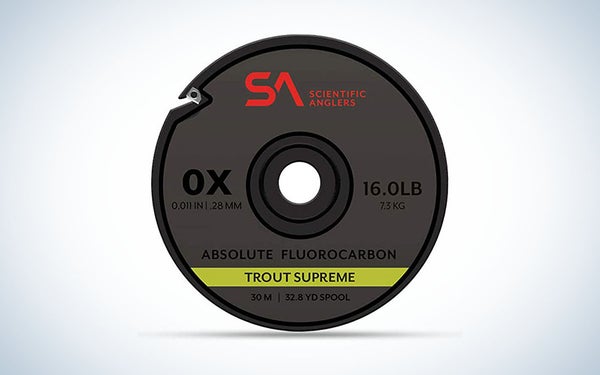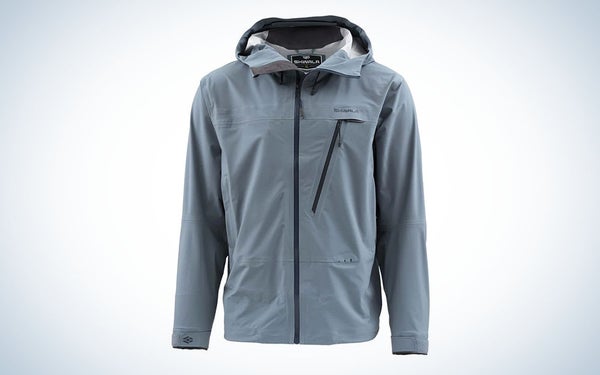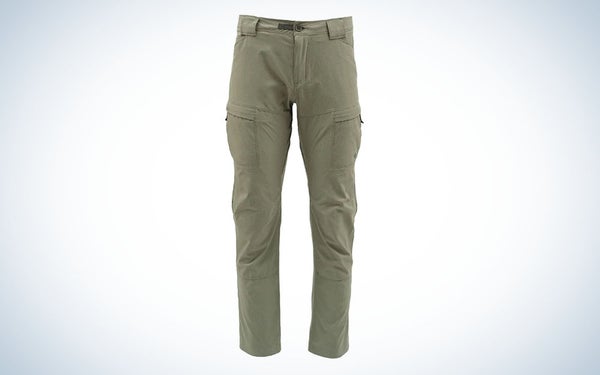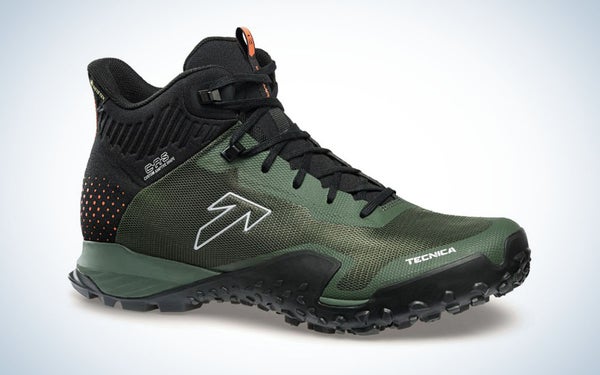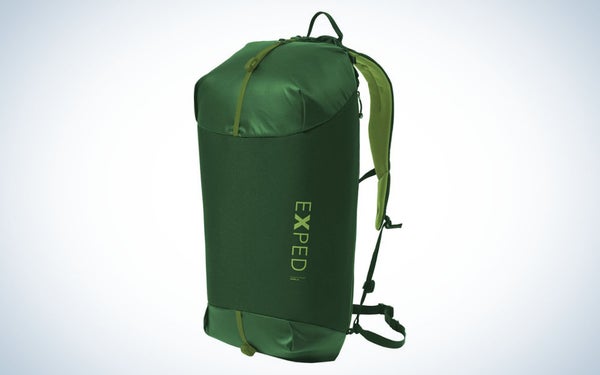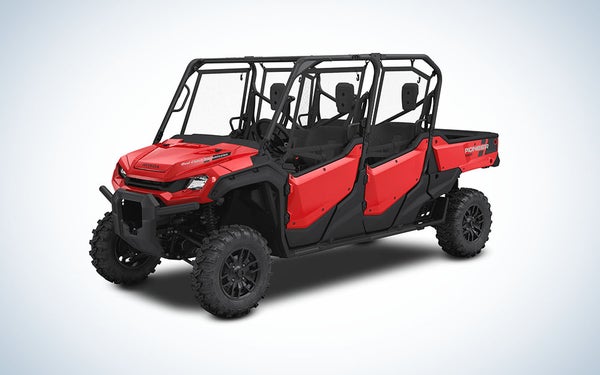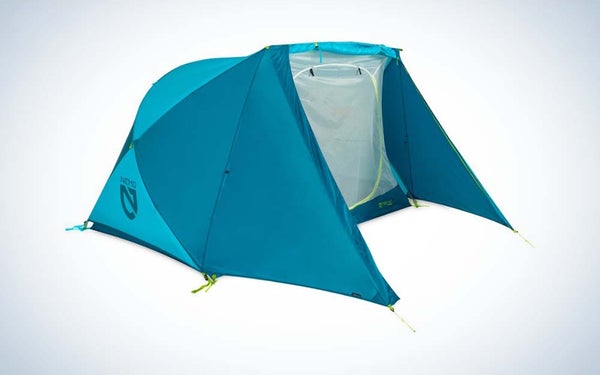The Best Hunting and Fishing Gear of 2022
After a year of putting the best hunting gear and fishing tackle through the wringer, here are our picks for the Best of the Best

We may earn revenue from the products available on this page and participate in affiliate programs. Learn more ›
For once in our lives, we made good on a New Year’s resolution. See, after taking a year off in 2021, we vowed to bring back our annual Best of the Best Awards in 2022. In case you forgot, Best of the Best is our (usually) annual, end-of-year list in which we recognize the year’s best hunting gear and fishing tackle. As you’re about to read, not only did we deliver on our promise—but we’ve made this year’s BOTB our biggest to date. Along with all the requisite hardcore hunting and fishing gear, we’ve added awards for the best hiking gear, camping equipment, and more.
Our goal for 2022? To go even bigger. Till then, here are our picks for the most innovative and cutting-edge outdoor gear of the year—the absolute best of the best.
Best Hunting Gear of 2022
- Best Compound Bow: Hoyt Carbon RX-7
- Best Crossbow: TenPoint Nitro 505
- Best Rifle: Nosler Model 21
- Best Precision Rifle: Bergara Premier MG Lite
- Best Handgun: Wilson Combat SFX9
- Best Shotgun: Benelli Super Black Eagle 3-inch 28 gauge
- Best Scope: Swarovski ds Gen II 5-12X52
- Best Binocular: Zeiss SFL 40
- Best Shotgun Ammo: Winchester Bismuth
- Best Centerfire Ammo: Hornady Outfitter Loaded with the CX Bullet
- Best Rimfire Ammo: 24-grain ECO-Power 22 LR load from Norma
- Best Knife: Helle Nipa
- Best Trail Cam: Browning Defender Pro Scout Max
- Best Hunting Jacket: Sitka Ambient Jacket
- Best Turkey Vest: Sitka Equinox Vest
- Best Upland Vest: Filson Upland Guide Strap Vest
- Best Hunting Boots: Rocky U.S. Made Elk Stalkers
- Best Ground Blind: Rig Em Right Hydeout
Best Fishing Gear of 2022
- Best Fly Rod: Sage R8 Core
- Best Fly Reel: Epic Backcountry Fly Reel
- Best Freshwater Reel: Diawa Free Swimmer
- Best Saltwater Rod: Ugly Stick Carbon Inshore
- Best Saltwater Reel: Penn Authority
- Best Freshwater Lure: Live Target Live Craw
- Best Fishing Waders: Simms G3 Guide Waders
- Best Wading Boots: Simms Flyweight Access Wading Boot
- Best Fly Tippet: Scientific Anglers Absolute Trout Supreme
- Best Fishing Apparel: Skwala Carbon Jacket and Skwala Sol Wading Pants
Best Outdoor Gear of 2022
- Best Hiking Boots: Tecnica Magma MID GTX WS
- Best Travel Bag: Exped Radical 45
- Best UTV: Honda Pioneer 1000-6
- Best Tent: NEMO Switch 2P Tent
Best Hunting Gear of 2022
Best Compound Bow: Hoyt Carbon RX-7
The Hoyt Carbon RX-7 won our 2022 flagship compound bow test and is our pick for the best bow of the year. Field & Stream’s hunting editor, Will Brantley, was impressed with the updated cam system and the bow’s flawless performance. It provided consistent results with great features to take home the top slot in our test.
“As is often the case with our winning flagship,” Brantley said, “the RX-7 won because it essentially did nothing wrong in any of the objective categories, and was a crowd favorite in all the subjective ones. It was among the test’s most accurate shooters—and for me personally, it was the most accurate, with average groups of just under an inch.” Hoyt’s impressive vibration dampening technology made the RX-7 one of the quietest bows in the test. These features absorb shock from your hand and lessen outside factors to keep you focused on your target.
The draw cycle of the RX-7 is smooth throughout, with a perfect valley for hunting and a solid back wall. It has a flawless fit and finish, a lightweight construction, and handy dimensions. These features combined with the bow’s consistent shooting performance gave it the edge for the best compound bow of the year. —The Editors
Best Crossbow: 10-Point Nitro 505
I’ve written the words “fastest crossbow made” so often over the past few years that I fear people think I’m running out of kind things to say about crossbows. But the truth is, they do get faster every year. Two models now flirt with or break the 500-fps mark, and one of them, the TenPoint Nitro 505, is my choice for the best crossbow of 2022. It’s also, for now, the fastest crossbow ever made.
The bow is almost identical to last year’s Vapor RS470 in both appearance and function. It uses the excellent AcuSlide cocking/decocking system, which is about the quietest, easiest-cocking system out there. The reverse limbs and the RX8 cam system, which rotates the cams a full 404 degrees, get credit for the speed, and the setup is just 6.5 inches wide when cocked. A handful of modern crossbows are more compact, but the Nitro 505 feels good in the hand, and with excellent ergonomics. I’ve hunted with it from a climbing stand and a tight shooting house, and it’s at home in both. It’s a shooter, too: I’ve tested mine extensively to 70 yards, where it’ll still break nocks. At these speeds, go with a compact, low-profile broadhead for the best arrow flight. —Will Brantley
Best Rifle: Nosler Model 21
The ideal hunting rifle should balance between the hands, deliver sub-MOA precision, and weigh less than the average house cat. It should also be trim, and rugged. This perfectly describes the Nosler Model 21. The Model 21 is one of the top five rifles I’ve ever tested. During the 2022 F&S Rifle Test, one of the testers described it as “a virtually flawless rifle.” The Model 21’s barrel is threaded, and the barreled action is bedded in a McMillan Hunters Edge Sporter Stock made of carbon fiber, which is shaped well and feels slim in hand. In my opinion, its black paint job dotted with white spots gives the appearance it lives in the bottom of a pigeon coop. However, beauty is found in many ways, and it’s hard to say a perfectly balanced, less-than-7-pound rifle, that will consistently put bullet after bullet into sub-MOA groups, is not gorgeous. We also took a closer look at the Nosler Model 21 after our rifle test. —Richard Mann
Best Precision Rifle: Bergara Premier MG Lite
Yes, this rifle costs as much as two rifles, but this is the Best of the Best—and sometimes, if you want the best, you have to pay a little more. But this gun is worth every cent, because, in my opinion, you’re really getting two rifles in one with the MG Lite. First, it’s a competition/target rifle. Since this gun is as light as it is, you can easily make weight in field-shooting matches like NRL Hunter and use heavy high-end optics without getting weighed down. That same lack of weight—and smart features like a folding stock, threaded muzzle, and an ARCA rail—make it ideal for taking into the mountains come hunting season. But a big reason why we named the MG Lite the Best Precision Rifle of 2022 during our annual rifle test is because of how well it’s put together. Rather than just seeing how light they could make a rifle, Bergara engineered an extremely high-quality rifle out of cutting-edge materials. The MG Lite is not flimsy like some ultralight rifles. Every button and latch is solid. The folding stock opens and closes with a thud, the TriggerTech trigger works flawlessly, and the Magnesium chassis is stiff, providing the kind of support necessary for precise shooting. —Matthew Every
Best Handgun: Wilson Combat SFX9
The SFX9 from Wilson Combat is essentially an upgraded version of their EDC X9 handgun. The difference is that the SFX9 has a solid frame. We shot this pistol a lot during the annual F&S handgun test because we liked it. The trigger on it was superb, the sights were excellent for fast defensive work, and the action cycled with impeccable smoothness. Somewhere around 450 rounds, we had a failure-to-feed malfunction. That’s when we realized we’d not put a drop of gun oil on the handgun since the test began. After a little gun juice, we put another 200 rounds through the SFX9 without issue. The SFX9 is not an inexpensive pistol, but once you get it in your hand, you realize why it’s the best handgun of the year. —R.M.
Best Shotgun: Benelli Super Black Eagle 3-Inch 28 Gauge
Benelli took the 20-gauge duck gun trend a step further by introducing a 3-inch, 28-gauge version of the Super Black Eagle 3. That’s right, the first 3 ½-inch 12-gauge semiauto is now also a svelte magnum 28-gauge. With 3-inch bismuth and HeviXII ammo, the 28 can now hold its own in the duck blind. And, you can still load it down with standard 2 ¾-inch shells and shoot doves and quail, which have always been the perfect game for this smallbore.
The gun itself is the inertia-operated Super Black Eagle 3, only smaller, and it has the important features of the SBE 3 like the ComforTech stock that cuts vibration and recoil as well as the Easy Locking bolt that never goes out of battery. It also features Benelli’s Easy Loading system with a new mag spring and bolt latch, which is helpful, because skinny shells can be tricky to load, especially in the cold. Available with a 26- or 28-inch barrel, it weighs well under six pounds and it comes in black and several camo patterns. —Phil Bourjaily
Best Rifle Scope: Swarovski ds Gen II 5-12X52
The ds Gen II 5-12X52 from Swarovski was, without question, the best new rifle scope we tested in our annual F&S rifle scope test. This scope is so new and innovative—features include a built-in rangefinder and no turrets—that we had to test it a little differently than the other scopes. Once the scope is zeroed, you don’t have to make any adjustments because the scope does it for you. “I shot at targets of about 12 inches in diameter from 188 yards to 1018 yards—and never missed a single shot,” said Field & Stream shooting editor, Richard Mann. “You simply hit the laser button, and one of the 30 available illuminated reticles (you pick the one you want) appears on the bottom vertical reticle wire. You place that reticle on the target and pull the trigger.” —The Editors
Best Binocular: Zeiss SFL 40
When it comes to generating excitement about the latest binocular, optics manufacturers have it tough. They can’t come out with a new caliber or add yet another rail. Or make it modular. A binocular is pretty much a binocular, and so all that manufacturers can do is strive toward perfection. And Zeiss has taken a significant step closer with the new SFL 40.
With any high-end binocular, you expect the image quality to be stunning, and the SRL 40’s is. You expect first-rate low-light performance and excellent ergonomics. Check, check. But what makes the SFL 40 so innovative is what it lacks—in terms of size and weight. By using an ultralight frame and a groundbreaking design that places thinner lenses closer together, Zeiss has delivered all of the qualities above in a lighter, more compact package. At just 22.6 ounces, with its big, smooth focus wheel and beautiful, bright image, the SFL 40 makes glassing a pleasure. And if you’re the sort of hunter who will spend the bulk of your days behind your binocular, that is something to get excited about. —Dave Hurteau
Best Shotgun Ammo: Winchester Bismuth
Bismuth shot is staging a strong comeback after fading away a few years ago, and with good reason. The bismuth-tin alloy pellets are harmless to any gun barrel, and they carry more energy than steel. Winchester sets a new standard in pattern performance with its entry into the ever-growing bismuth market. Available in 12- and 20-gauge 3-inch shells, the Winchester shells contain a micro-bead buffer that cushions the shot and reduces bismuth’s tendency to shatter upon firing. While other bismuth loads lose some pellets to breakage before they ever leave the muzzle, Winchester’s shot stays round and flies true. It shoots excellent patterns to 40 yards and beyond, as I was able to see late last winter at Winchester’s Nilo Farms. We also shot flighted ducks with the new loads in 12- and 20-gauge with lethally impressive results. For now, you can get these in 3-inch, 1 ounce loads of 4 shot at 1350 fps in 20-gauge, or 1 3/8 ounces of 1 or 4 shot at 1450 in 3-inch 12-gauge, but I’d bet there are more offerings in store. —P.B.
Best Centerfire Ammo: Hornady Outfitter Loaded with the CX Bullet
With the new CX bullet, Hornady has carried their Outfitter ammunition line into the 21st century. This new bullet is monolithic and made of a copper alloy. You could say that Hornady took the best aspects of two of their most trusted bullets—the GMX and the ELD-X—and combined them to offer a high-performance, extended-range, big-game bullet.
Like with the GMX, the CX’s mono-metal construction nearly guarantees 95 percent or better weight retention, deep penetration, and bullet upset of up to more than 1.75 times the original diameter. This means wide wound cavities and deep penetration. To reduce copper fouling, Hornady also optimized the bullet’s groove geometry, and to help with the bullet’s flight, they added the Heat Shield Tip that’s used on the ELD-X bullet. This tip provides a consistent ballistic coefficient during flight, improves accuracy, and reduces trajectory variations from shot to shot.
CX bullets are loaded in Hornady’s Outfitter line, in popular big-game cartridges from .243 Winchester to 375 H&H. They’re also available as reloading components. During our test of the new 6.5 Creedmoor Outfitter load, the 120-grain CX bullet penetrated 26.5 inches, had a recovered weight of 119 grains, and opened with a frontal diameter that was nearly a half-inch across. —R.M.
Best Rimfire Ammo: Norma 24-grain ECO-Power 22 LR Load
Recognized and respected as a manufacturer of premier centerfire rifle ammunition, Norma has engineered what could possibly be one of the best small game .22 long rifle loads. With a zinc-cored, copper-plated bullet, that only weighs 24.7 grains, this load is blistering fast with an advertised muzzle velocity of more than 1700 fps. That kind of spend not only flattens trajectory, but also equates to more than 150 foot-pounds of energy at the muzzle.
This 100-percent lead-free bullet is a bit different from conventional rimfire hollow-point bullets. It is designed so that the nose of the bullet fragments immediately after impact. This creates a wicked wound cavity at the vital organ depth of small game animals. However, the base of the bullet, which remains intact, can push as deep as a foot. This kind of terminal performance will work for critters as small as tree squirrels and as large as coyotes. Developed especially for single-shot and bolt-action rifles, the brass cases are nickel-plated to resist corrosion and improve feeding and extraction. —R.M.
Best Knife: Helle Nipa
Any new knife from Helle is in the running for a Best of the Best Award before they even make it, because, with this Norwegian company, you know exactly what you’re going to get. For starters, you get a strong, corrosion-resistant blade made using a unique process that involves sandwiching proprietary high-carbon steel between layers of 18/8 stainless. It’ll come razor sharp and be ridiculously easy to keep that way. You also get a gorgeous handle, most likely made of curly birch, and shaped and finished by hand. And most importantly, you get impeccable quality and craftsmanship.
What makes a new Helle knife new, typically, is just its shape and size. And yet that’s just what makes the new Nipa stand out. A lockback folder that measures 6.5 inches open and 3.7 inches closed, it is the perfect shape and size for a deer knife. At just under 3 inches, the blade is long enough to deal with any deer. The handle, just shy of 4 inches, is long enough for a four-finger grip and all the control that gives you. And the drop-point profile is just right for field chores. Like every Helle I’ve ever used, this one is simple, very strong, elegant, and functions perfectly. In other words, if you get the Nipa, you’re going to get a perfect marriage of form and function that’s beautiful to look at and made to last a lifetime. —D.H.
Best Trail Camera: Browning Defender Pro Scout Max
Many of the Best of the Best winners come with a hefty price tag. But not the Defender Pro Scout Max. This is one of the most affordable award winners and its performance is just as impressive. It took home the best value award in our test of the best cellular trail cameras for providing sharp and clear images during night and day with a trigger speed that rivals other high-end cams. “Browning cams are simply among the best in the business due to their reliability, and if I were going to run a string of wireless cams, I wouldn’t hesitate to buy a bunch of Defender Pro Scouts,” said Field & Stream trail cam expert, Scott Bestul. Simply put: This is a bulletproof cam at an extremely affordable price. —The Editors
Best Hunting Jacket: Sitka Ambient Jacket
Without question, the Sitka Ambient jacket was the best jacket we tested in 2022. It is ideal as a mid-layer during cold weather hunts, but also serves well as an outer layer on chilly mornings. I wore it for a week straight on an elk hunt in the Rocky Mountains and rarely had to add a layer over it. I experienced temperatures ranging from the low 20s up to the mid-70s; the Ambient was the reason I stayed comfortable. It is extremely durable and packable—perfect for backcountry hunts where a strong layering system is a must.
I was shocked at how warm the Ambient kept me because it’s so darn light—18 ounces. The active insulation keeps you plenty warm when standing still or glassing, but still allows for breathability when moving. Plus, the stretchy construction doesn’t restrict you when hiking, drawing a bow, or moving quickly.
Sitka makes the Ambient in every one of their patterns, including solid colors. I love this jacket so much that I picked up a second one in the marsh pattern for waterfowl hunting. —Ryan Chelius
Best Turkey Vest: Sitka Equinox Vest
I hate turkey vests. They’re so floppy and cumbersome—a fact that should come as no surprise given that most are designed to be organizers first and clothing second. I mean, who wants to wear an organizer? My answer up to now has been not to wear one. But Sitka has come up with a better solution. They simply turned the turkey-vest concept inside out by designing the Equinox vest to be clothing first and organizer second. The result is a vest that’s snug instead of floppy and sleek instead cumbersome. And as you would expect with Sitka, it’s also very smartly designed, with just the features you want and none you don’t. The side compartments have plenty of room for miscellaneous items and calls, including dedicated water-resistant pockets for box and pot calls, with silent magnetic closures. The back is a hydration-bladder-compatible daypack with comfortable foam padding, adjustable straps for a snug fit, and cinch straps for carrying extra gear. The vest itself is made of a tough 75-denier woven fabric with water-repellent finish yet is very lightweight. Most important, it is comfortable to wear all day, even on the move. After almost 40 years of turkey hunting, I’d given up on finding a turkey vest I like, and now here it is. —D.H.
Best Upland Vest: Filson Upland Guide Strap Vest
This summer, Filson launched a brand-new flagship upland hunting vest—and it’s phenomenal. The Filson Upland Guide Strap Vest combines lightweight construction with ample storage space. The company says it’s built for putting in miles in steep terrain to put up a few coveys, and that’s exactly what I did while hunting California quail this fall.
It worked as advertised. The suspension system puts much of the weight of the pack on your hips—so much so that I practically forgot it was there while hunting. The thin shoulder straps don’t get in the way when quickly mounting the gun. The minimalist design means you can stay cool during early season hunts and layer up without issue during cold winter days.
The vest comes with plenty of storage options, including two shell pockets that each fit a full box and then some. Plus, the numerous zip pockets allow you to keep your other essentials secure. The vest has two designated bottle holders and a spot for a hydration bladder—so you and your dog can stay hydrated. And, of course, a lined rear game pouch has plenty of room for a limit of birds. —Sage Marshall
Best Hunting Boots: Rocky U.S. Made Elk Stalkers
The Rocky Elk Stalkers are unlike many leather boots today because they’re made well, built in America, and they don’t cost a whole paycheck. My only quibble with them is the name. In elk country, I prefer stiff trekking boots that I can lace tighter than a corset. But where the Elk Stalkers come up short in the elk department, they more than make up for in the stalking department. They have a supple, broken-in feel out of the box, making them perfect for creeping around in the duff. Yet they’re still burley enough to keep out the cold, wet misery that is hunting season. Every hunter needs a pair of comfortable, warm boots to wear on the back 40, and the Elk Stalkers are the best I’ve seen in a while. —M.E.
Best Ground Blind: Rig Em Right Hydeout
Rig Em’ Right sent me this blind to test just before hunting season. When it arrived, I tossed it in my messy truck where it sat until I found the perfect place for it. I put it in a choke point next to where two fields meet on our property and shot a deer out of it that afternoon. It’s been there ever since—in rain, snow, and some pretty nasty wind. Right away, I liked how easy the blind was to set up. It has plenty of webbing on the exterior to brush in—which is important if you’re going to set the blind and hunt in it the same day. And I really appreciate how every opening has a silent hook and bungee closure. Like some ground blinds today, it has removable mesh windows you can see through. But what sets it apart is the camo print on the inside. I like it because I can blend into the blind in my regular hunting clothes without having to wear black. The Hydeout comes in Gore Optifade Subalpine and Timber camo, so it’ll match your shirt, jacket, pants, neck gaiter, truck seat covers, beer koozies, and underwear—if you’re into that sort of thing. —M.E.
Best Fishing Gear of 2022
Best Fly Rod: Sage R8 Core
Every year, there’s a new 5-weight fly rod so powerful and responsive you’ll think that no bank-sipping trout will ever be out of your reach again. And there’s one so light and lively, with such feel and control, that it’ll seem like an extension of your pointer finger. But it’s never the same rod. Yet this year it is, and it’s the new Sage R8 Core. From long bombs to roll casts to precision mending, from dry flies to nymphs and traditional streamers, the R8 does it all, and does it all beautifully. Very few fly rods are as accurate at short range as they are at long, but the R8 is, and at a mere 2 11/16 ounces, it’s easy to cast all day without worrying that your form will break down. Over many years of testing fly rods, I’m sure I’ve come across a few that were as versatile as the R8, but I’ve never seen one that does everything so well. It’s the best all-around trout rod I’ve ever put my hands. —D.H.
Best Fly Reel: Epic Backcountry Fly Reel
I’ll be the first to admit that the fly reel isn’t exactly the most important component on a trout rig. In fact, it’s probably the least important—coming in third place after the rod and line—because, at the end of the day, its main function is as a line-holder. But that knowledge doesn’t keep me from wanting to fasten a kick-ass fly reel on my trout rig. And the Epic Backcountry Reel is the best new fly reel I fished with in 2022. I tested the 5/6 model (it’s also available in 3/4 and 7/8), which weighs 4.6 ounces and has spool capacity for about 100 yards of backing. This large-arbor reel is made from cold-forged tempered 6061-T6 aluminum (in other words—it’s tough) and has a sealed ceramic drag, which means the 7/8 model is suitable for fresh- and saltwater fly fishing. And as you can see in the photo, the Backcountry is a stunner. The reel has a low-sheen satin finish and, according to Epic, “is available in any color as long as it’s black.” —Colin Kearns
Best Freshwater Reel: Diawa Free Swimmer
If you want proof that you don’t need to spend a fortune for a great freshwater reel, look no further than the Diawa Free Swimmer. The Free Swimmer at ICAST 2022 uses an impressive Automatic Tournament Drag (ATD) system that reduces initial drag start-up while remaining smooth and consistent once engaged. This affordable reel also uses DigiGear technology, part of Diawa’s manufacturing process that digitally cuts the gears to create a perfect meshing of the main gear and the pinion gear. These features make this reel punch above its weight when it comes to on-the-water performance.
The new design of the free swimmer includes an ultralight machined-cut handle and larger gear teeth to improve the longevity of the gear system. Diawa found a way to increase durability, slash weight, and still keep it affordable for anglers. So, how does it perform? The reel balances extremely well on most freshwater rods and the reduced weight is a nice bonus. The line comes off the reel smoothly and when you do come tight the ATD drag performs flawlessly, keeping consistent pressure on the fish. For $200, you won’t find a better all-around freshwater reel. —R.C.
Best Saltwater Rod: Ugly Stick Carbon Inshore
I love everything about this rod. From the flashy baby blue color to its kickass inshore performance. The new Carbon Inshore rod from Ugly Stick is my favorite back bay rod I’ve ever used. This 100–percent carbon one-piece blank is made specifically for inshore anglers who target redfish, snook, sea trout, striped bass, flounder, and any other fish you find in intercoastal waters.
You’ll find two handles on the grip: a cork handle on the foregrip for comfort and feel, and a rubber shrink tube grip in the back for increased durability and control. The longer handle in the back gives you more leverage and control when hooked up to fish. Plus, it helps get those extra few feet when bombing casts way out there.
The best part is you only have to shell out one Benjamin to pick up the Carbon Inshore. This affordable rod comes in two different lengths—6 feet 6 inches, and 7 feet—and three different powers. The stainless steel guides increase the lifespan of the rod and the one-piece construction makes it a back bay workhorse. —R.C.
Best Saltwater Reel: Penn Authority
Saltwater can eat fishing reels alive. It is extremely corrosive and can rust your equipment before you even have the chance to clean it. I know this from personal experience, hence the reason I’ve always been reluctant to invest in a quality saltwater spinning reel—until now.
The Penn Authority is one of the smoothest, well-built saltwater fishing reels I’ve ever used. You might cringe when you see the price tag, but if you are serious about saltwater fish, it is worth the investment. I first got my hands on a Penn Authority this summer and I was impressed with it right out of the box. It’s remarkably light, and I loved the oversized knob for easy reeling. When I found out it can be submerged 1-meter for 30 minutes without water intrusion, I was sold.
Surf anglers should especially take notice of the Authority; crashing waves, sand, and rocks aren’t as big of a concern anymore. The reel is built from a solid piece of metal with a stainless-steel gear train and pinion gear—it’s pretty dang durable. The Authority comes in sizes 2500–10500 with a 12+1 bearing system. So no matter what saltwater fish you’re after, there is something for you. —R.C.
Best Freshwater Lure: Live Target Live Craw
The Live Craw is the most realistic hardbait I’ve ever seen. Made from extremely durable plastic, the Craw features lifelike details built around a corrosion-resistant 2X hook. The soft-plastic appendages are made from TPE plastic that enhances the realism and movement of the bait. This thing looks identical to a live crawfish in the water.
The Live Craw also allows for customization of three different weight sizes that attach to the underside of the lure. This allows you to control the speed of the drop, and when the lure hits the bottom, the craw is sitting in the defense position, just as a live crawfish would. Again, the realism of this lure is why I love it so much.
You can swim, twitch, or jig it, but the speed of the drop is what really spurs a bite. My favorite features are the claws, legs, and antennae. These durable soft plastic appendages are what separate this lure from the rest. You don’t need to re-rig every time you catch a fish like you would when fishing traditional soft plastic craws. This lure is built to catch fish after fish and anglers can pick one up for $16 when it hits the market this winter. —R.C.
Best Waders: Simms G3 Guide Waders
Twenty years ago, Simms revolutionized fly-fishing waders when the company released its all-new G3 Guide wader. They changed the game again in 2008, when they upgraded the G3 with patented front and back seams to create articulated legs—and again in 2014 and yet again in 2018 when they made further improvements. Just when you could’ve been forgiven for believing Simms had perfected their flagship wader, they released their most cutting-edge iteration of the G3 in 2022. And they’re the best fly fishing waders I’ve ever worn in my life.
A number of tweaks were made to the new G3s, but the most impressive is an all-new four-layer Gore-Tex laminate in the lower section of the waters that improves breathability by 33 percent and durability by up to 84 percent. I’ve worn the hell out of my G3s all year and have yet to feel even the slightest pin-prick leak. As for fit and feel, I’ve owned sweatpants that were less comfortable than the new G3s. These are waders that you can wear (i.e., fish in) all day without any discomfort whatsoever.
Knowing Simms, they’re probably already at work on new modifications to the G3 waders, which they’ll unveil in a few years. Until then, you’ll have to forgive me for believing that a finer pair of waders does not exist. —C.K.
Best Wading Boots: Simms Flyweight Access Wading Boot
It’s a package deal in the wading category, as Simms also takes home our Best of the Best Award for the year’s top wading boot with their all-new Flyweight Access Boot. I’m always dubious when it comes to the “grippiness” of any wading boots that don’t have felt soles (which are illegal where I fish). I’ve just never found a pair that could handle the snot-slick rocks on my home river without having to first stud each sole with a dozen or so cleats. But after getting my hands on—or rather, feet in—a pair of the latest from Simms, I stand corrected.
The Flyweight Access Boots are the most sure-footed rubber-soled wading boots I’ve ever worn, thanks to an exclusive-to-Simms Vibram Idrogrip Flex outsole. According to the company, the outsole is engineered with a rubber compound that’s softer—and therefore grippier—than what you’ll find on other wading boots. I can’t say that I still don’t suffer the occasional slip or tumble on the water wearing these boots, but do I wade more confidently in them than any other I’ve tried—no cleats required.
True to their name, the Flyweight Access Boots are light, weighing in under 3 pounds. But that lack of heft doesn’t result in a lack of support or durability. As for comfort? Wearing these boots feels like fly fishing in Air Jordans. —C.K.
Best Fly Tippet: Scientific Anglers Absolute Trout Supreme
The day I read that Scientific Anglers had won a Best of Show Award at this year’s International Fly Trade Dealer’s Show (essentially the SHOT Show for fly fishing gear) for their new fluorocarbon tippet, Absolute Trout Supreme, also happened to be the day I realized that the spool of 6x tippet I keep in my fly vest had run out. So, I decided to try the SA stuff.
I feel obligated to get this out of the way now: This tippet is expensive. The 30m spool I splurged on cost $30. Turns out, I was so impressed, that when I came home from my first on-the-water test of Absolute Trout Supreme, I ponied up for spools in 4x and 5x, too. Because this tippet is also strong. In fact, SA claims it’s the strongest fluorocarbon they’ve ever offered. Absolute Trout Supreme is made up of a two-layer fluoro construction: The softer outer layer helps seat knots more securely and improves knot strength by 33 percent, and the firmer core gives the tippet its tensile strength. I was also impressed by how supple this tippet is, which can’t hurt when it comes to making a more drag-free presentation. Absolute Trout Supreme is available in 0X to 7X—and each comes wrapped around Scientific Anglers’ handy (and patented) cutter spool. —C.K.
Best Fishing Apparel: Skwala Carbon Jacket and Skwala Sol Wading Pant
One of the most exciting developments in outdoor gear this year was the arrival of the new fishing-apparel company, Skwala. (In case you’re wondering, skwala is a variety of stonefly.) I was fortunate enough to test several pieces from their collection, and my two favorites, without question, are the Carbon Jacket and the Sol Wading Pant. The jacket is everything you want it to be: light, flexible, comfortable, durable, breathable, and, most importantly, waterproof. It’s also very packable. When the forecast looks iffy, I keep mine wadded up in the large back pocket of my fly vest. It’s so light (less than 1 pound), I barely notice it’s there.
As for the pants, I loved them more with each time I wore them—whether that was while standing on the bow of a skiff on the tarpon flats or wet-wading trout rivers in the summer. Not only are they durable and comfortable, but they have 50 UPF sun protection, articulated leg seams for unrestricted movement, and they dry out in no time. As exciting as Skwala’s debut this year was, I have a feeling they’re only getting started. So don’t be surprised if you see their stuff win more Best of the Best Awards for years to come. —C.K.
Best Outdoor Gear of 2022
Best Hiking Boots: Tecnica Magma MID GTX WS
The Tecnica Magma S MID GTX WS fast hiking boots are officially the first pair of hiking boots to effectively prevent all blisters and hot spots, even on extended treks. As lightweight as these boots are, they are incredibly durable and effective in various environments. The boot fit is comfortable but may be a bit snug if you have wide feet. To truly put them to the test, I hit the trail with no break-in to see how they performed. After the first hike, I was convinced in terms of comfort and support.
The next big test was canoe camping, followed by a backpacking trek through mountainous terrain. Surprisingly, they kept my feet dry even when portaging, rain showers, and walking through shallow water. They also remained stable and gripped rocks well when wet. The sure footing of the boots proved to be a top selling point for me after using them on class 4 rocky terrain in the Cascades while backpacking. Even after a steep nine-mile downhill on the last day, I had no blisters or hot spots returning to the car. They aren’t the most breathable, but that’s expected with waterproof boots. Even with little ventilation, these are perhaps the best boots I have ever tried to date, and that is not an exaggeration. The weight, waterproofing, fit, and traction control easily make these my top pick for the best hiking boots of 2022. —Meg Carney
Best Travel Bag: Exped Radical 45
The Exped Radical 45 is a travel backpack made for casual weekends away, commuting, as a gym bag, for weekday cragging, or as a carry-on for your next flight. While it may not have the largest or most complex compartments for storage, the simplicity of the design makes it easy to stay organized and keep your belongings safe on the go. Since it can be carried either as a backpack or a duffel bag, you can use this bag in several areas of your life to fit a true minimalist fashion. The extra-long zipper duffel style makes accessing items from inside the pack easier than traditional backpacks that open from the top.
Having the zipper against your back when worn as a backpack can give any traveler some peace of mind in crowded areas, and the compression straps on the sides help to keep everything compact and close to your body. This is a functional travel bag versatile enough for multi-day trips or as a daily-use bag. We also liked that it is made from recycled materials, the fabric is PFC free, and bluesign certified. —M.C.
Best UTV: Honda Pioneer 1000-6
I’ve had the all-new Honda Pioneer 1000-6 Deluxe Crew fully loaded on a downhill slope and it still came to a complete stop with no brakes whatsoever while in low range, first gear. That control and performance will give you confidence on any terrain. This 6-seat UTV has a full-sized cargo bed that comes with a 999cc Unicam Parallel twin four-stroke motor and Honda’s amazing dual-clutch transmission. The DCT tranny means no belts to break or slip, and six forward gears plus reverse that you can use either in automatic or manual mode. What’s better is that you get these gear options in both high and low ranges, giving the 1000-6 the best engine braking in the class.
With the new Pioneer, you also get 2wd, 4wd, turf mode, and a locking differential for maximum traction. The locking differential combined with the DCT transmission gives you excellent traction control in extreme conditions. The longer wheelbase of 115.2 inches combines with the self-leveling rear suspension to give you a smooth ride and aids traction by giving you better down pressure on the wheels. You also get 2,500 pounds of towing capacity and 1,000 pounds of cargo-bed capacity, meaning you can haul your entire deer camp in with one trip. —Derrek Sigler
Best Tent: NEMO Switch 2P Tent
Perhaps one of their most innovative tent designs, the NEMO Switch Multi-Configuration Tent, gives you three shelter options in one convenient package. As expected, this shelter functions as a three-season tent, but it can also be a free-standing screen room or a sun shelter. No matter your configuration, the tent is surprisingly easy to set up, even camping alone. Although one vestibule is larger, there are still two, making this suitable for two people. Camping with two average-sized adults, the sleep setup is a bit snug, but it works, especially when keeping gear outside in the vestibule.
The tent materials and poles are made from durable materials and hold up well in cold, wet, and windy conditions (when set up correctly). The tent’s weight, at a minimum, is around six pounds, and with all of the materials, eight pounds. This tent can quickly become a staple in several outdoor activities. From hunting trips to car camping to beach days, you’ll be using this tent for decades of adventures with the NEMO Lifetime Warranty. —M.C.
